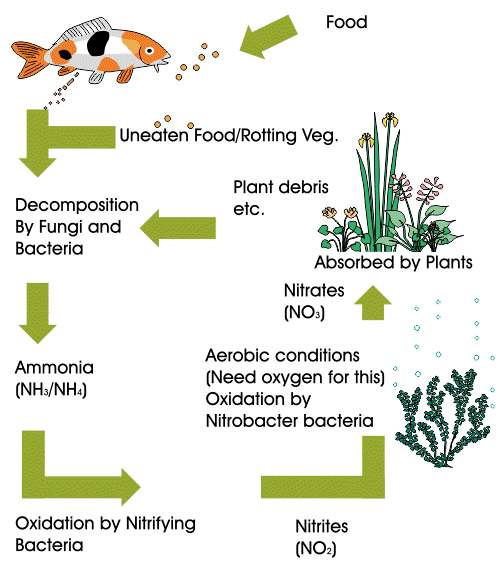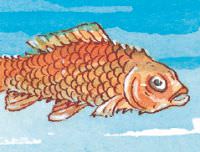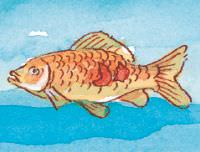Healthy water means healthy fish!
Once you have completed your pond, installed your filtration and introduced your fish and plants, it is important to monitor water quality regularly. Using a simple test kit, for the “settling down” phase of your pond’s life, will bring any potentially harmful water quality problems to light. It is during this initial period, which may vary from six weeks to three months depending on the number of fish and plants, that the build up of beneficial bacteria takes place in both the filter and the pond itself.
These bacteria are responsible for the breakdown of harmful toxins that are produced from uneaten food, fish waste and any other dead and decaying matter in the water. The level of helpful bacteria in a pond will need to increase naturally as more fish are added, therefore it is very important not to over stock or over feed fish in your new pond.
Once this “Nitrogen Cycle” (illustrated below) has become balanced, the majority of ponds should require little maintenance although occasional testing of the water for ammonia and nitrite is always to be recommended.
Water Quality
Poor water quality is the primary reason for most problems with fish health. In certain conditions it can also be responsible for algae blooms resulting in green water. However, it should be noted that, clear water is never a guarantee of healthy water and therefore there can be no substitute for regular testing of the water in your pond. The pH level is the first basic test, ideally the results should show a pH level between 6 - 8, with 7 being perfect. A pH of over 8 is often caused by untreated or excessive cement work.
Such ponds will often suffer more from algae problems and the fish will be more vulnerable to ulcers. Low pH values can be caused by use of acidic rocks or rotting vegetation and a lack of adequate filtration.
The other common tests are Ammonia, Nitrite and Nitrate. High levels of any of these toxins are usually associated with filtration problems, immature ponds or inadequate planting. They can also be caused by over-feeding, over-stocking or rotting vegetation in the pond, when there is not enough helpful bacteria present to break these toxins down.

Pond Fish Problems Solved
Never presume problems are going to disappear. Always take action if you feel there are health problems, but don’t pour treatments in until you’re certain of the problem.
Firstly... Test the Water. The majority of fish mortality and health problems are caused by poor water conditions. In this case it will be necessary to adjust the water quality as well as treating fish.
Symptoms: Fish swimming rapidly and erratically. Visual parasites. Treatment: Apply a parasite treatment

Symptoms: Bloated body, swollen eyes and scales like – pine cone. Treatment: Apply a ulcer treatment & isolate

Symptoms: White ‘cotton wool’ patches. Treatment: Apply a fungus treatment

Symptoms: Loss of colour, ragged fins, mucous shedding from skin. Treatment: Apply a bacterial treatment

Symptoms: Fish rubbing on plants and flicking. Reddening on skin, white spots. Treatment: Apply a parasite treatment

Symptoms: Holes in skin (ulcers) reddening of skin. Treatment: Apply a ulcer treatment.

Symptoms: Difficulty breathing, gulping. Do not confuse with oxygen shortage. Treatment: Apply a bacterial treatment.

Tips For Healthy Fish
To keep fish healthy, the key is keeping the water healthy.
Test the water regularly for toxins and pH levels.
Toxin levels can be kept at a minimum by filtration and careful planting in the pond.
If water quality is consistently poor, it may be that the filter needs upgrading.
It is essential to test the water before purchasing fish. Remember that established fish in the pond can become acclimatised to a gradual decrease in water quality over time, which could be fatal to new arrivals.
 British Pounds
British Pounds
